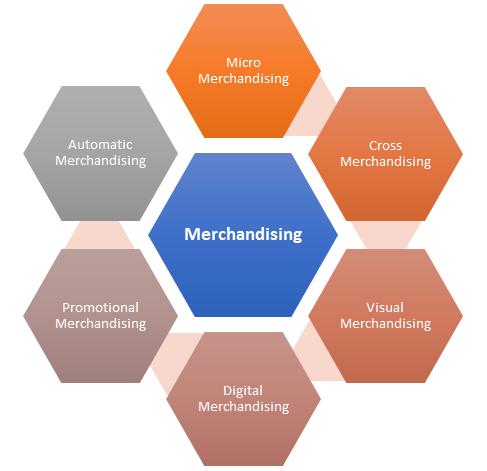- Business Concepts ›
- Marketing and Strategy ›
- Merchandising
Merchandising
This article explains definition, importance, types, factors & example of Merchandising from marketing perspective.
Merchandising Definition
Merchandising includes all the promotions done at a retail store to make the consumers buy the products at the store. In other words, merchandising is planning the marketing of products at the right place and right time in the right quantities to help the retailer reach his goals. Activities that fall under merchandising are display techniques, spot demos, free samples, point-of-sale methods, product design, packaging, etc.
Importance of Merchandising
It is an important aspect of business and marketing. Companies put in a lot of efforts in ensure that the target customers are aware of the product offerings of a company. However, simply advertising on media channels does not drive sales. This is where having merchandises plays a pivotal role in business.
Increasing visibility at stores, retail outlets through display kiosks, package design, free sample products or merchandise etc is known as merchandising. Companies put in a substantial amount of money for such promotions. Merchandising service companies help boost the business for companies by helping them out with a layout plan for their products & offerings.

Read More
Types of Merchandising
There are different types of merchandising, some of which are highlighted below:
1. Micro merchandising is where the retailer modifies the arrangement of various products in shelves in accordance with the customers’ needs and the local markets.
2. Cross merchandising involves combining complementary products in the store placement in order to boost sales.
3. Visual Merchandising is presenting the store in such a way that it will attract the consumers. It includes decorating the store, floor and wall displays, three dimensional plans, window displays etc.
4. Digital merchandising is making use of digital displays to attract customers to buy the products in a store.
5. Promotional merchandising is where stores make use of occasions like New Year, Christmas, festivals etc. to increase their footfalls and sales.
Other types of include automatic, scrambled etc.
Factors Affecting the Merchandising
Some factor affecting are:
1. Size of retail: Whether it is very small, small, medium, large, very large
2. Type of store
3. Organisational Structure
4. Merchandise to be carried
Examples of Merchandising
Examples of brands using good in-store merchandising is Mom & Me, Lego, which use a variety of displays and three dimensional plans to attract kids. Another example is the placement of items like chocolates, lip balms, accessories near the billing counter so that the customer makes an impulse purchase. This is an example of point-of-sale which increases sales.
Hence, this concludes the definition of Merchandising along with its overview.
This article has been researched & authored by the Business Concepts Team which comprises of MBA students, management professionals, and industry experts. It has been reviewed & published by the MBA Skool Team. The content on MBA Skool has been created for educational & academic purpose only.
Browse the definition and meaning of more similar terms. The Management Dictionary covers over 1800 business concepts from 5 categories.
Continue Reading:
What is MBA Skool?About Us
MBA Skool is a Knowledge Resource for Management Students, Aspirants & Professionals.
Business Courses
Quizzes & Skills
Quizzes test your expertise in business and Skill tests evaluate your management traits
Related Content
All Business Sections
Write for Us